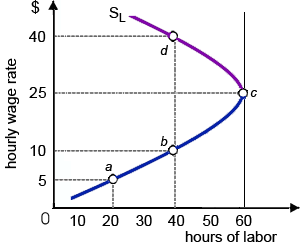When wage rates rise above $25 per hour in this figure given below, in that case the: (1) worker works more diligently to ensure that she keeps her job. (2) employer pays an excessively high efficiency wage. (3) income effect exceeds the substitution effect. (4) rate of wage exploitation increases. (5) incentive for the firm to automate production decreases.

Please choose the right answer from above...I want your suggestion for the same.